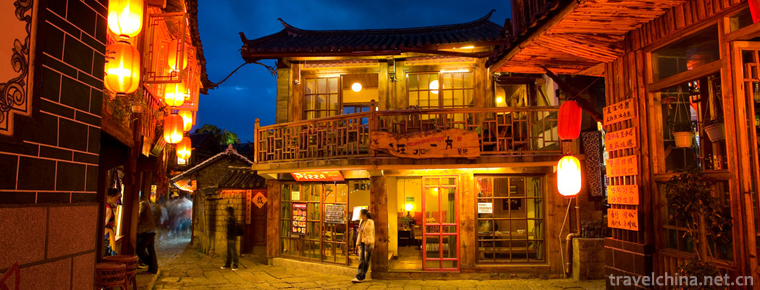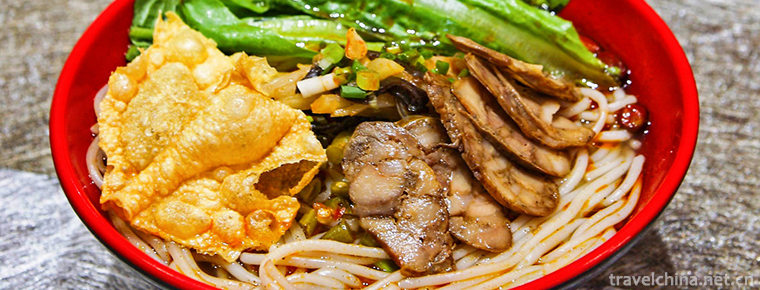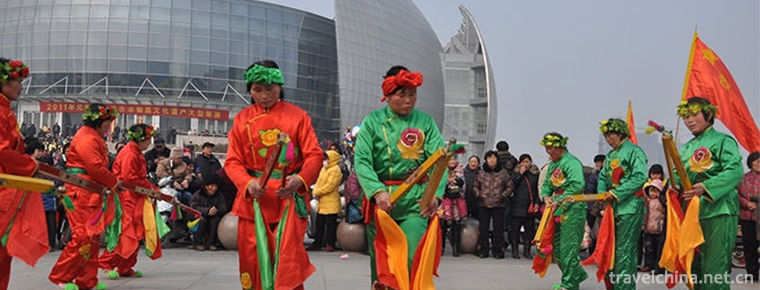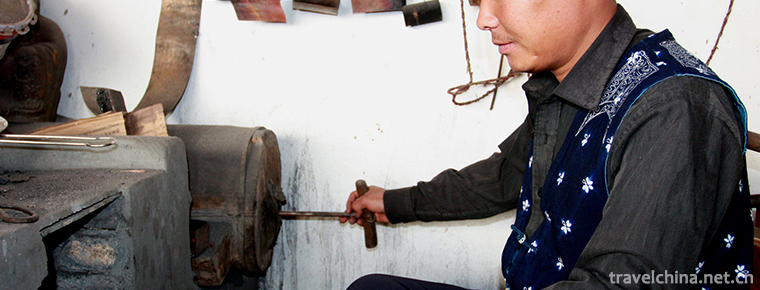Imitated Diet Making Skills of Imperial Diet in Qing Dynasty
Imitated Diet Making Skills of Imperial Diet in Qing Dynasty
Imitated meals (imperial meals of the Qing Dynasty) production skills, Beijing Xicheng District local folk traditional skills, one of the national intangible cultural heritage.
Imitated meals (imperial meals of the Qing Dynasty) are made from precious raw materials such as Shan Bazhen, Hai Bazhen, Poultry Bazhen, Cao Bazhen, etc., using Manchu barbecue and Han stewing techniques, bringing together the essence of North-South flavor and a wide range of dishes.
On May 23, 2011, the imitation diet (imperial meal of the Qing Dynasty) production technology was approved by the State Council of the People's Republic of China and included in the third batch of national intangible cultural heritage list of traditional skills, item number_-204.
historical origin
In 1925, Beijing Imitated Meal Restaurant was founded by several royal chefs in the former imperial dining room of the Qing Palace. The restaurant is named "imitation meal", which means to specially imitate the method of imperial dining room to make dishes.
In 1979, after digging and sorting out, Fangshan Restaurant launched the first representative banquet of the Imperial Diet of the Qing Dynasty in China, which attracted wide attention from the catering circles all over the world. After tasting it, Mr. Pujie, the brother of the last emperor, wrote down the comment of "authentic Manchu-Han Full Seat".
In 2005, with the support and assistance of Quanjude Group, the Fangshan Restaurant has made a new breakthrough in non-legacy work. In that year, Fanzhuang set up the Manchu-Han Full-Chair Research Committee and hired a number of experts to guide the work. The restaurant carries out R&D and innovation on the "Man-Han Full Seat" dishes. While inheriting the original flavor, according to the characteristics of modern people's green healthy diet, the restaurant chooses food materials and cooks them carefully. It launches the "Man-Han Full Seat Selected Menu" for customers, so that guests can enjoy the delicate features of the Royal meal of the Qing Dynasty when eating a meal.
Process characteristics
Man Han Quan
As the representative of the imperial meal of the Qing Dynasty, the imitation meal of Manchu and Han Dynasty inherited the Imperial Diet Culture completely. From the layout of the environment to the dining environment, from dishes to cooking methods, all of them strived for the original flavor of the Royal banquet. Its greatest feature is "refined, complex, rich and precious", that is, the selection of meals is fine, the cooking process is complex, the variety is rich and diverse, and the precious and rare raw materials. Selecting precious raw materials such as Shan Bazhen, Hai Bazhen, Poultry Bazhen, Cao Bazhen and so on, using Manchu barbecue and Han stew and boiling techniques, the essence of North-South flavor is gathered. There are many dishes, and the whole set of Manchu-Han dishes has more than 100 dishes, which can be eaten in three days and six meals.
Pine Hericium
Imitated meals (imperial meals of the Qing Dynasty) production skills, Beijing Xicheng District local folk traditional skills, one of the national intangible cultural heritage.
Imitated meals (imperial meals of the Qing Dynasty) are made from precious raw materials such as Shan Bazhen, Hai Bazhen, Poultry Bazhen, Cao Bazhen, etc., using Manchu barbecue and Han stewing techniques, bringing together the essence of North-South flavor and a wide range of dishes.
On May 23, 2011, the imitation diet (imperial meal of the Qing Dynasty) production technology was approved by the State Council of the People's Republic of China and included in the third batch of national intangible cultural heritage list of traditional skills, item number_-204.
historical origin
In 1925, Beijing Imitated Meal Restaurant was founded by several royal chefs in the former imperial dining room of the Qing Palace. The restaurant is named "imitation meal", which means to specially imitate the method of imperial dining room to make dishes.
In 1979, after digging and sorting out, Fangshan Restaurant launched the first representative banquet of the Imperial Diet of the Qing Dynasty in China, which attracted wide attention from the catering circles all over the world. After tasting it, Mr. Pujie, the brother of the last emperor, wrote down the comment of "authentic Manchu-Han Full Seat".
In 2005, with the support and assistance of Quanjude Group, the Fangshan Restaurant has made a new breakthrough in non-legacy work. In that year, Fanzhuang set up the Manchu-Han Full-Chair Research Committee and hired a number of experts to guide the work. The restaurant carries out R&D and innovation on the "Man-Han Full Seat" dishes. While inheriting the original flavor, according to the characteristics of modern people's green healthy diet, the restaurant chooses food materials and cooks them carefully. It launches the "Man-Han Full Seat Selected Menu" for customers, so that guests can enjoy the delicate features of the Royal meal of the Qing Dynasty when eating a meal.
Process characteristics
Man Han Quan
As the representative of the imperial meal of the Qing Dynasty, the imitation meal of Manchu and Han Dynasty inherited the Imperial Diet Culture completely. From the layout of the environment to the dining environment, from dishes to cooking methods, all of them strived for the original flavor of the Royal banquet. Its greatest feature is "refined, complex, rich and precious", that is, the selection of meals is fine, the cooking process is complex, the variety is rich and diverse, and the precious and rare raw materials. Selecting precious raw materials such as Shan Bazhen, Hai Bazhen, Poultry Bazhen, Cao Bazhen and so on, using Manchu barbecue and Han stew and boiling techniques, the essence of North-South flavor is gathered. There are many dishes, and the whole set of Manchu-Han dishes has more than 100 dishes, which can be eaten in three days and six meals.
Pine Hericium
Mandarin duck peach shrimp
Mandarin duck peach shrimp is not only delicious, but also a fine carved crafts. Choose prawns from the sea, mix egg white and oil, make a hundred sets of shrimp mashed, then knead the shrimp mashed into mandarin duck shape, then add carrot shredded, colored pepper shredded, cucumber shredded, black sesame, into a vivid and colorful Mandarin duck.
Chang'e knows
1. Cut shrimps and pork into fine hairs and put them in a small pot.
2. Add yellow wine, salt, monosodium glutamate, ginger, onion, egg white, starch and water chestnut into shrimp and pork antler and stir them into a thick paste.
3. Use a large flat dish, put a layer of oil on it, and squeeze shrimp antler into twenty-four balls for reserve.
4. Cut pork into 5*cm long and 2 cm thick strips, mix with egg white and a little starch paste.
5. Remove the leaves, tear off the skin and cut 4.5 centimeters long.
6. Cut thin and cooked ham and mushrooms into thin strips.
7. Place the bottom oil in the spoon and fry the shrimp balls flat with a small spoon over a small fire. When frying, heat the oil continuously. Use the method of half-frying and half-frying, keep the oil temperature at 34% heat and fry the shrimp balls light yellow.
8. Pour oil into the spoon, heat the oil into the pork strips, then pour celery heart, ham and mushrooms into the spoon, stir-fry with the pork strips, and pour out.
9. Leave less room oil in the spoon, fry Huisi slightly after heating, then pour the fried ingredients into the spoon, cook with vinegar first, then add salt, flavor and a little soup, stir-fry.
10. Stir-fry with water, add chicken oil, spoon in the center of the dish, and then put the fried shrimp cake in four weeks.
Inheritance and protection
Inheritance value
A waitress dressed in Manchu costume greets the guests with lanterns. Guests can also wear dragon robes, which addicts the emperor and adds a sense of immersion to the guests. After the guests are seated, they should clean their face and hands with small towels. The musicians will accompany the banquet with ancient music and follow the elegant legacy with strict and solemn etiquette, which will make the guests forget to return. Make it appreciate the profound Chinese cuisine and the origin of food culture. During the banquet, the waiter euphemistically talked about the exquisite allusions of famous dishes and the legendary origins of the tablets on pavilions and galleries, which made the guests more interesting.
Inheritance status
Nowadays, the imitation meal restaurant in Beijing has innovated and developed on the basis of the original palace dish production. As a member of the modern catering market, it has already been in line with the modern standards in the aspects of cooking methods, quality and food safety.
Inheriting characters
Dong Shiguo, male, Han nationality, born in 1936 in Hebei Province. Guobao Class Cooking Master, the third generation inheritance of imperial cuisine of Imitated Food Restaurant.
protective measures
Up to 2019, Imitated Food Restaurant has passed the certification of ISO 9001 Quality Management System and ISO 22000 Food Safety Management System successively. The research and development innovation of Qing Dynasty Royal Food Technology has already been incorporated into the quality/food safety management system, and has to be strictly monitored and evaluated every year.
social influence
Honorary recognition
On March 27, 2009, the award ceremony for the selection of 60 benchmarking restaurants in Beijing catering industry and the Beijing catering summit of Beijing catering industry network sponsored by Beijing catering industry association and catering network were held in Beijing. Quanjude, imitation meals and Fengze Garden have won the honor of "30 most influential benchmarking restaurants in Beijing catering industry in the past 30 years of reform and opening up" by netizens'vote and experts' evaluation.

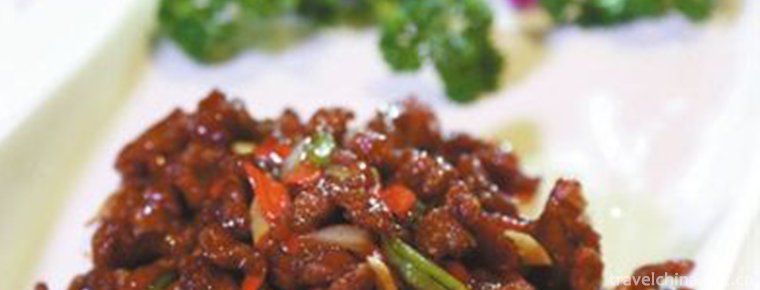
-
Lijiang Ancient Town
Lijiang Ancient City is located in the ancient city of Lijiang City, Yunnan Province.
Views: 207 Time 2018-10-17 -
Snail rice noodles
Snail jelly powder is a kind of snack rice flour in Liuzhou City, Guangxi Zhuang Autonomous Region. It has the unique flavor of hot, cool, fresh, sour and hot. is the most famous local snack in Liuzho.
Views: 315 Time 2018-11-05 -
Danxia Chishui
Danxia National Geopark in Chishui City, Guizhou Province, is located in the southern edge of Sichuan Basin, close to the northern foot of Daloushan Mountain in northern Guizhou Province and the weste.
Views: 214 Time 2019-01-05 -
Ancient Huaihe River Cultural Ecological Scenic Area
The ancient Huaihe River cultural and ecological scenic spot is located in Qingjiangpu District, Huai'an City, Jiangsu Province. It is a national AAAA-level tourist scenic spot. The scenic spot is an .
Views: 88 Time 2019-01-12 -
Nanwan Lake Scenic Area
Nanwan Lake, also known as Nanhu Lake, is located in Xinyang City, Henan Province. It is known as the "Pearl of South Henan" and is a famous natural scenic spot of Nanwan Lake. All around th.
Views: 183 Time 2019-02-07 -
Yanling National Flower and Tree Expo Park
Yanling National Flower and Tree Expo Park (Yanling Flower and Tree Expo Park) is located in the eastern part of Xuchang City, Henan Province..
Views: 109 Time 2019-02-28 -
Changsha window of the world
Changsha World Window is located on the Liuyang River in the northeastern suburb of Changsha City, Hunan Province. It is a cultural theme park jointly invested by Hunan Radio and Television Media Co.,.
Views: 180 Time 2019-03-17 -
Shangyang Dance
Shangyang Dance originated in the northern part of Juancheng County and spread around Li Jinshitang Town and Old Town. It is represented by Xinggrang Village of Li Jinshitang Town. According to textua.
Views: 404 Time 2019-06-13 -
Xibo embroidery
Xibo embroidery has a long history and rich connotation. Xibo women are skillful and skillful in capturing the beautiful scenery in life. During more than 200 years of living in the western part of th.
Views: 378 Time 2019-07-01 -
Silver jewelry making skills
Yunnan has been known as the "metal kingdom" since ancient times. Silver and copper resources in Western Yunnan are very rich, with Dali as a typical representative. Heqing Silver Ware Makin.
Views: 143 Time 2019-07-13 -
Historical evolution of Suining
In Xia and Shang Dynasties, Shu nationality gradually developed and distributed in Sichuan Basin. During the spring and Autumn period and the Warring States period, the Shu nationality .
Views: 193 Time 2020-12-16 -
Plant resources in Yibin
Yibin City belongs to subtropical evergreen broad-leaved forest area, with rich plant species and diverse vegetation types. There are 435 species of arbor and shrub plants, 205 genera, 86 families, 59 species of bamboos, and 310 species of landscapi.
Views: 291 Time 2020-12-18
